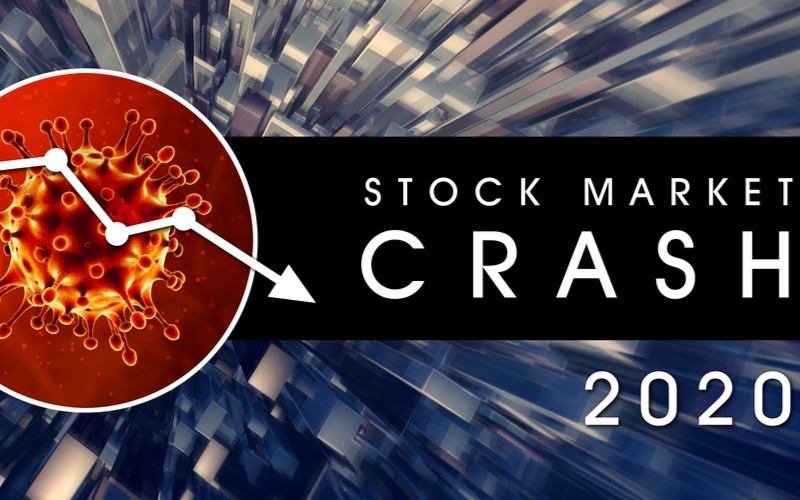The Surprising Secret to Proper Portfolio Diversification Revealed

Are you diversified?
When considering the question, the first thought that comes to mind is the importance of having a diversified portfolio. Diversification is frequently emphasized as a key strategy to manage risk in investment portfolios. By spreading investments across different asset classes, sectors, and regions, investors aim to reduce the impact of adverse market movements on their overall portfolio.
These traditional ways to diversify include:
Invest in different industries: Allocate your investments across various sectors, such as technology, healthcare, finance, consumer goods, and energy. This helps mitigate the impact of sector-specific risks and allows you to benefit from the potential growth in different areas of the economy.Consider market capitalization: Diversify your portfolio by investing in companies of different sizes. This can involve including large-cap, mid-cap, and small-cap stocks. Larger companies often provide stability, while smaller companies may offer higher growth potential.
Geographical diversification: Invest in stocks from different countries and regions. This helps you reduce exposure to the risks associated with a particular country's economy or political environment. Consider allocating funds to both domestic and international markets.
Asset allocation: Diversify your portfolio across different asset classes, such as stocks, bonds, and cash equivalents. This strategy helps spread risk and balance potential returns. Bonds, for example, tend to be less volatile than stocks and can provide stability during market downturns.
Include different investment styles: Consider blending growth-oriented stocks with value-oriented stocks. Growth stocks typically have strong potential for future growth, while value stocks are often undervalued relative to their fundamentals. By combining both styles, you can diversify your portfolio across different investment strategies.
Allocate across market sectors: Within each industry or sector, diversify your holdings across different companies. This helps mitigate the risk associated with investing in individual stocks. By holding a mix of stocks within each sector, you reduce the impact of any single stock's performance on your overall portfolio.
Do traditional diversification methods truly work? Let's examine the events of the 2020 market crash for some insights. During a market crash, a phenomenon known as correlation emerges, leading to a situation where all asset classes become closely intertwined. Even a well-constructed mix of traditionally uncorrelated stocks, such as GLD (gold), TLT (bonds), SPY (S&P 500), AAPL (big tech), BA (aerospace), TGT (retail), LUV (airlines), OXY (oil), and AMGN (pharmaceuticals), experienced a high degree of correlation from March 6 to March 19, within a mere two-week period.
Yes, but it might not help
The performance of these assets during that period was as follows: GLD -12.21%, TLT -11.19%, SPY -19.26%, AAPL -8.8%, BA -62%, TGT -5.4%, LUV -33%, OXY -60%, AMGN -6%. Despite representing different sectors, all of these stocks witnessed simultaneous declines. This phenomenon, which I refer to as "crash correlation," challenges the notion of proper diversification. In reality, being invested in these assets essentially amounts to a position that is short volatility.
This observation raises the question of whether this can be considered proper diversification. In my opinion, the answer is no. While an investor may have holdings across multiple assets, the common denominator among them is exposure to volatility. As a result, when a crash occurs, these assets tend to move in the same direction, leading to significant losses.
It is important to recognize that in a market crash, traditional diversification methods alone may not offer adequate protection. To mitigate the effects of crash correlation and volatility exposure, alternative strategies may need to be employed. These can include incorporating assets with true diversification potential, such as non-traditional or alternative investments, or implementing additional risk management techniques like hedging strategies.
During market crashes, there is an occurrence known as "crash correlation" that affects not only traditional diversification methods but also those who sell option premium. The popular method of selling implied volatility through short straddles or short strangles with naked puts can lead to significant losses during a crash. For instance, in the March 2020 crash, a $1 SPX put option skyrocketed to $90, resulting in potential losses of -$90 on a trade that aimed to earn $2. Thus, a $10,000 trade could have resulted in almost a million dollars in losses, causing immense financial stress.
Maintaining diversification in your portfolio involves a crucial factor: understanding a second-order Greek known as "vomma." Vomma is a derivative of Vega, which measures the sensitivity of an option's price to changes in volatility. When volatility is high, Vega increases, leading to a rise in option prices. Vomma, on the other hand, represents the exponential growth of Vega. In simpler terms, it signifies that Vega, or the price of an option, can experience significant exponential increases when volatility expands substantially, as seen in crash-type market conditions. By grasping the concept of vomma and its relationship with volatility, you can better navigate market fluctuations and strive to maintain a diversified portfolio.
Imagine a scenario where, during a market crash, you hold an asset that genuinely offers diversification. Envision the satisfaction of witnessing your $10,000 positions soar close to a million dollars. While this may be an exaggerated illustration, it highlights the potential gains that can be achieved by implementing the appropriate trade structure and capitalizing on the advantages of vomma. By focusing on trade strategies that consider vomma and its implications, you can potentially avoid the misconception of being adequately diversified while still being exposed to substantial losses due to the impact of vomma.
Another crucial factor in capitalizing on market crashes is the ability to exit trades efficiently through a single-order trade structure. During a market crash, it is essential to avoid "legging out" of trades, as this approach poses the risk of turning profits into losses. The process of closing one half of a trade while not simultaneously closing the other half can expose you to adverse directional movements in the market. I personally experienced this unfortunate outcome in early 2018, where a promising profit transformed into a substantial loss due to a legging-out scenario. To provide further insights into this matter, I have created this video. By understanding the importance of a consolidated trade structure during market crashes, you can aim to protect your profits and mitigate potential losses effectively.
Another critical aspect of maintaining proper hedging is being proactive in your approach. This means keeping your hedge in place at all times, as waiting can be detrimental. Since it's impossible to predict exactly when the market will crash, attempting to catch up by implementing a hedge after volatility has already spiked is a challenging and often unsuccessful strategy. Moreover, there is a high probability that volatility will revert to its mean before the hedge can be fully utilized if it is applied too late. To avoid such predicaments, it is crucial to adopt a proactive hedging stance, ensuring that your portfolio is consistently protected regardless of market conditions.
Bottom Line
Overall, achieving effective diversification and mitigating the impact of market crashes requires a comprehensive understanding of various factors, including vomma, trade structure, volatility dynamics, and proactive risk management. By combining these elements, investors can strive for a more resilient and successful trading system.
About the Author: Karl Domm's 29+ years in options trading showcases his ability to trade for a living with a proven track record. His journey began as a retail trader, and after struggling for 23 years, he finally achieved
consistent profitability in 2017 through his own options-only portfolio using quantitative trading strategies.
After he built a proven trading track record, he accepted outside investors. His book, "A Portfolio for All Markets," focuses on option portfolio investing. He earned a BS Degree from Fresno State and currently resides in Clovis, California. You can follow him on YouTube and visit his website real-pl for more insights.




